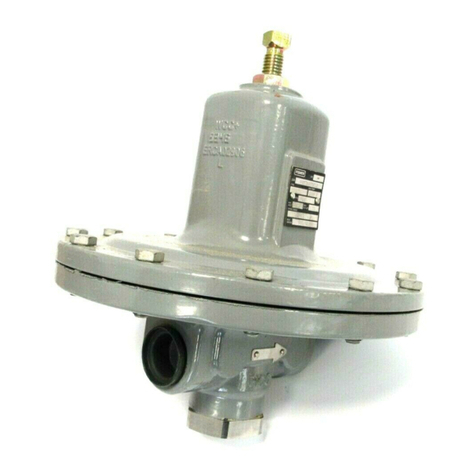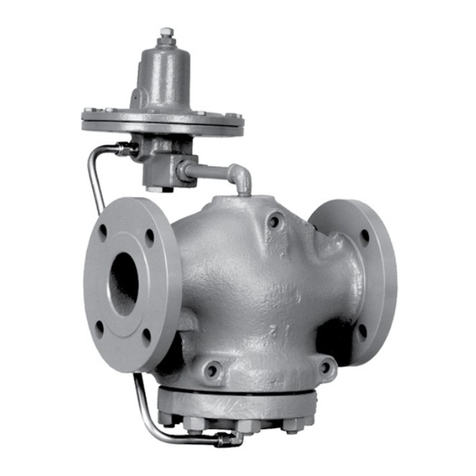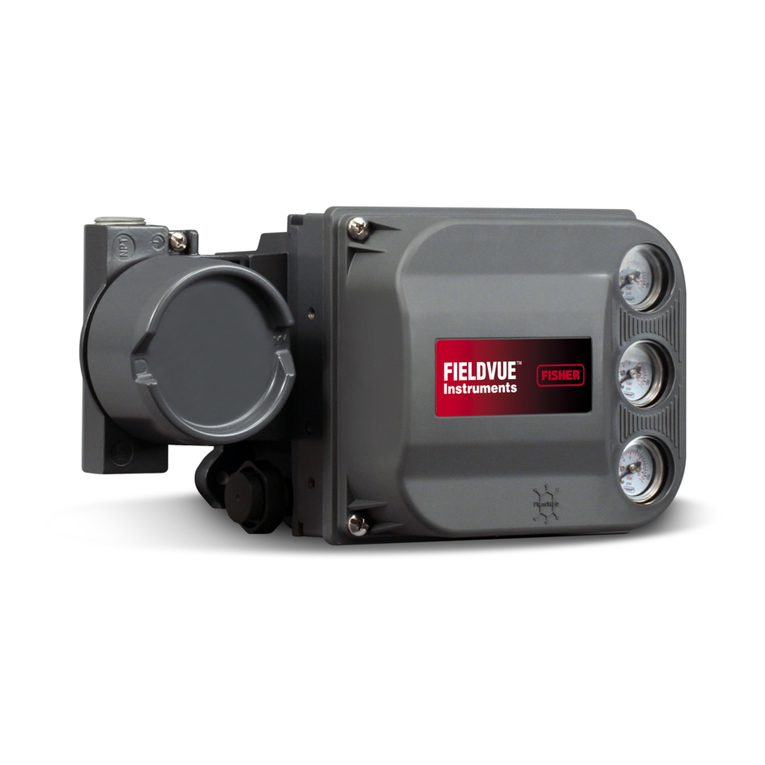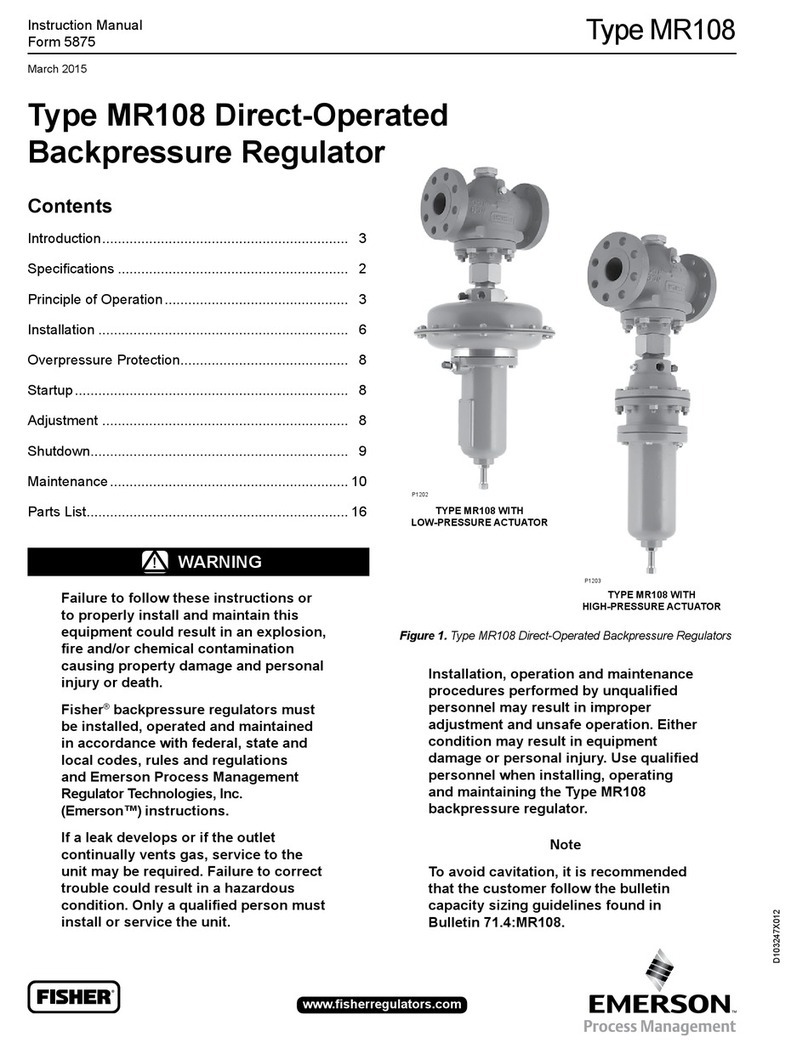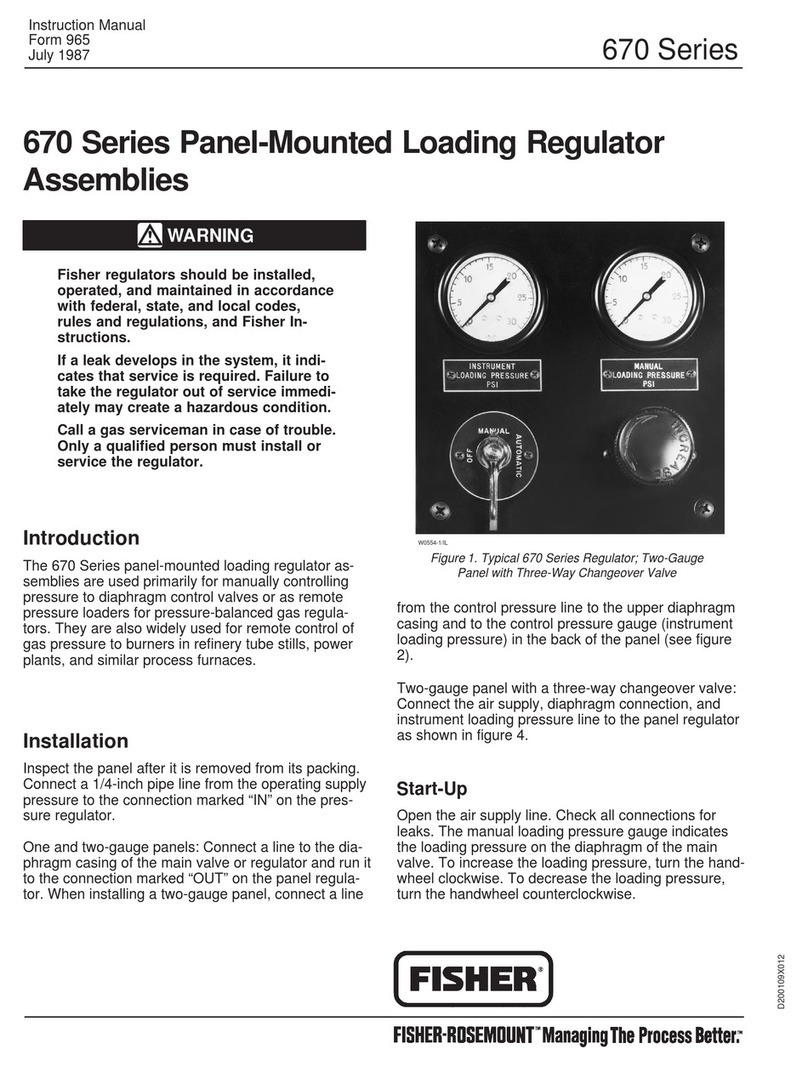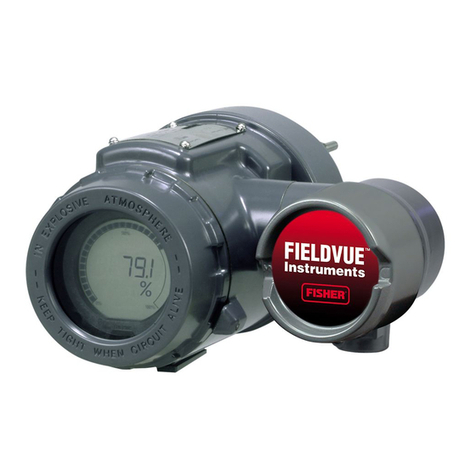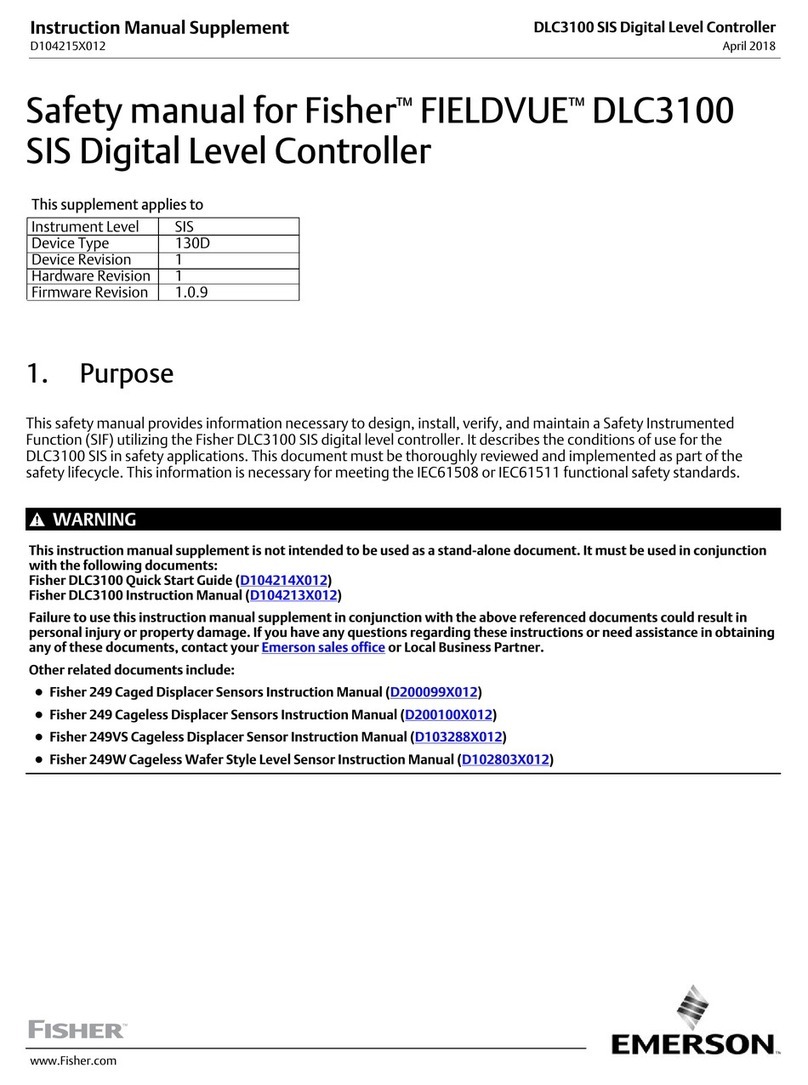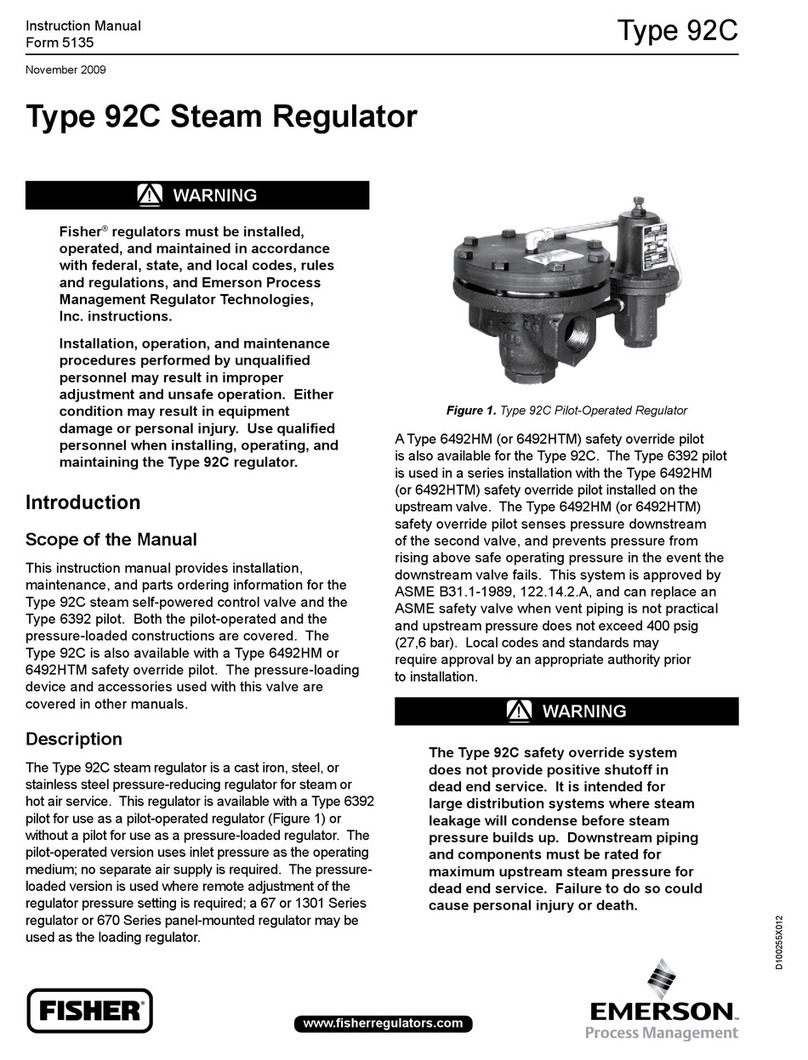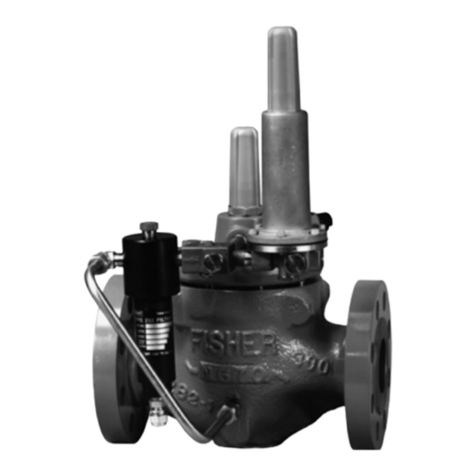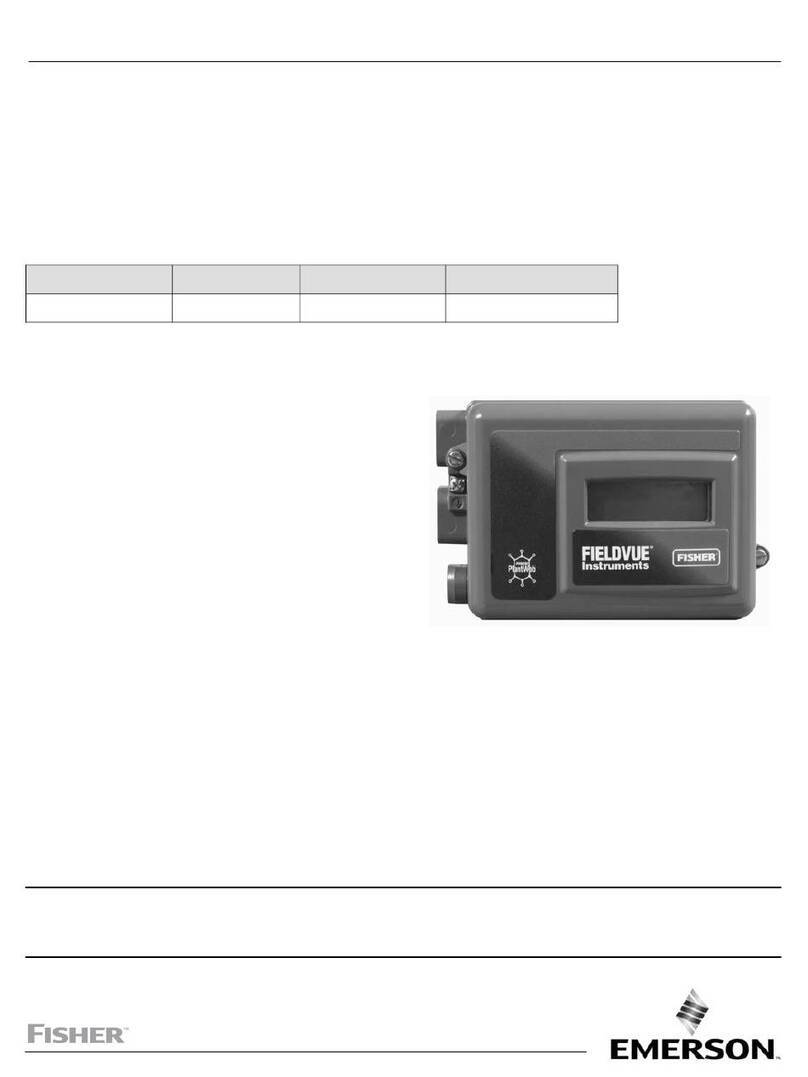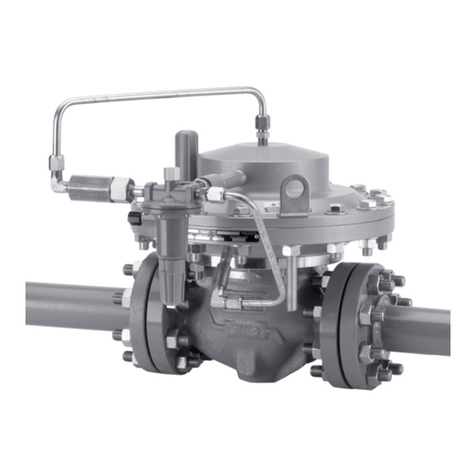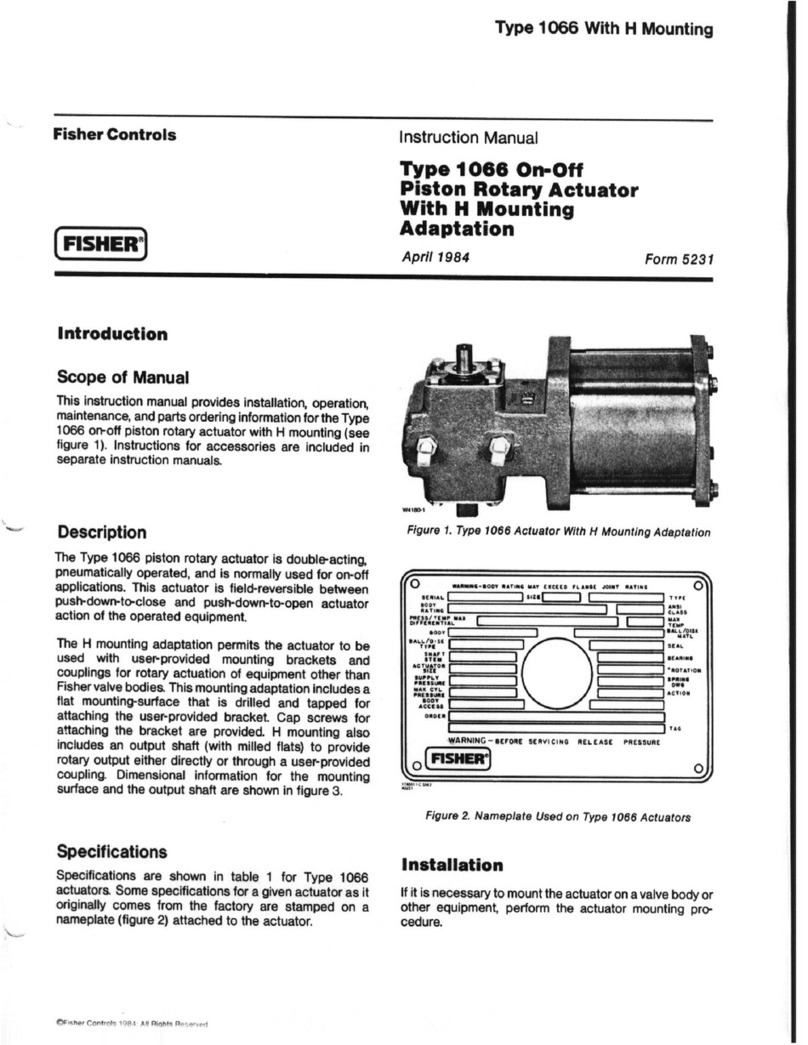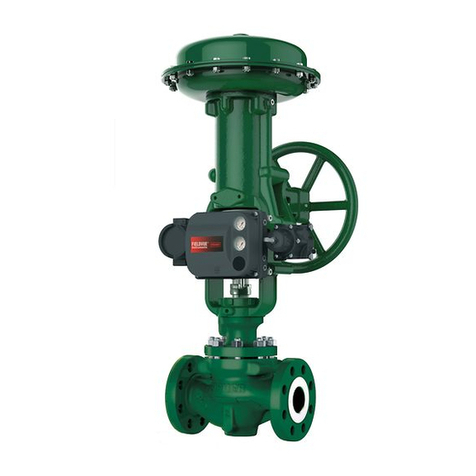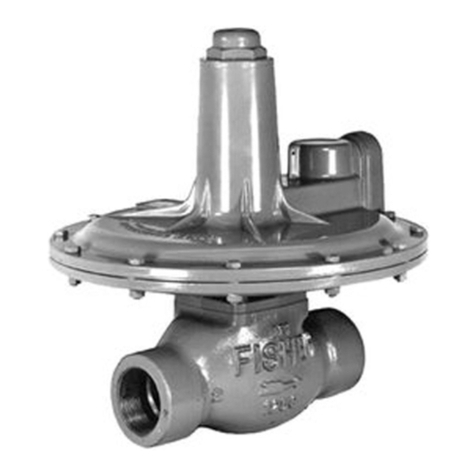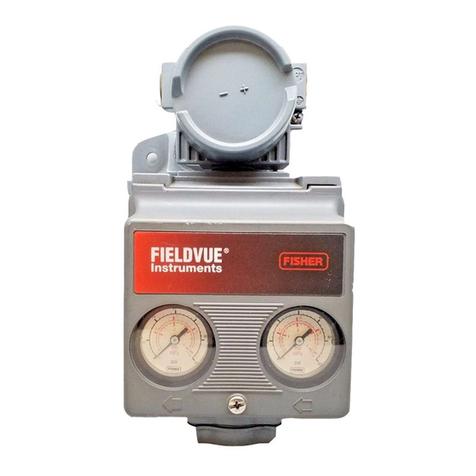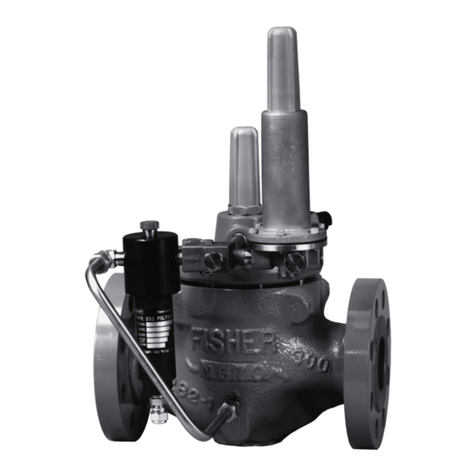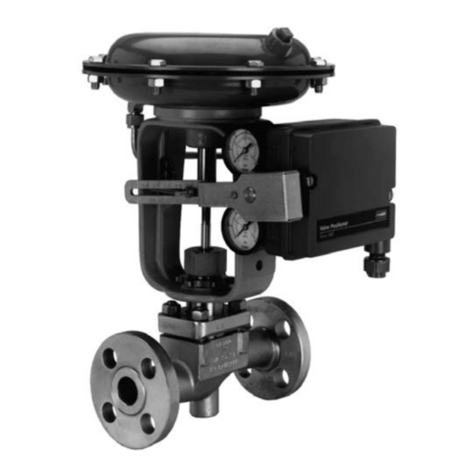
Instruction Manual
D103626X012
685 Piston Actuator
June 2017
6
If the actuator is being installed without a positioner, the cylinder loading pressures should be supplied through a
4way solenoid valve or a switching valve. The top and bottom sides of the piston are pressurized through the upper
and lower heads (i.e. top and bottom of the cylinder).
The supply pressure medium should be clean, dry filtered air. If the supply source is capable of exceeding the
maximum actuator operating pressure or positioner supply pressure, appropriate steps must be taken during
installation to protect the positioner and all connected equipment against over pressurization.
The control valve should be located where it will be accessible for servicing. Room should be left above and below the
control valve to permit removal of the actuator and valve plug.
ThreeWay Valve Applications Note
In threeway valve applications where the actuator fully strokes at a frequency of once per minute or faster, and the
stroking speed is rapid (less than 0.5 seconds per stroke), there is a possibility that the stem can fracture at the plug if
the actuator cylinder pressure is greater than 5.5 bar (80 psig). This can cause loss of control of process fluid and
further damage to the actuator. Consideration should be given to the use of highstrength, fatigueresistant stem
materials in these applications.
Actuator Mounting
The following procedure describes how to mount a 685 actuator on a pushdowntoclose valve so that the piston rod
to valve plug stem connection allows full travel and proper shutoff. Key numbers referenced in the following steps are
shown in figures 3 and 4.
If you purchase a 685 actuator for field installation on a control valve, mount the actuator on the valve and secure it to
the bonnet with the eight bonnet-to-actuator bolts. The stem connection should then be made up to clamp the
actuator stem and valve plug stem together to provide proper valve travel.
CAUTION
If the valve stem is allowed to remain in the up position (towards the actuator) during mounting, it can interfere with the
actuator mounting, possibly damage valve stem threads, or bend the valve stem. Be sure the valve stem is pushed down
(into the valve body), away from the actuator while mounting.
To avoid damaging the seating surfaces, do not rotate the valve plug while it is seated. Also avoid damage to the valve plug
stem by careful use of tools during travel adjustment.
1. Thread two lifting eyes into the free ports on the upper head (key 1) 180 degrees apart. Reference tables 4 and 5 for
approximate weights of the actuator to select an appropriate lifting eye. Attach appropriate rigging gear to the
lifting eyes.
2. Slowly lower the actuator down onto the valve. Once the actuator is in place, insert the bonnettoactuator bolts
and tighten the hex nuts.
3. Turn the two stem locknuts (if present) all the way onto the valve stem thread.
4. Starting with the cylinder fully retracted, manually, or with air pressure, extend the piston rod to the specified valve
travel.
5. Attach the stem connector (key 18), clamping the piston rod (key 17) to the valve stem. Be sure you also attach the
feedback arm and travel indicator.
6. Cycle the actuator to check availability of desired total travel and that the valve plug seats before the cylinder
reaches the end of its stroke. You can make minor travel adjustments, if necessary, by loosening the stem
